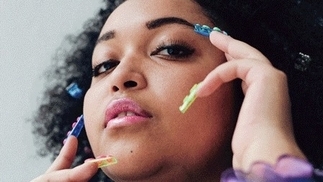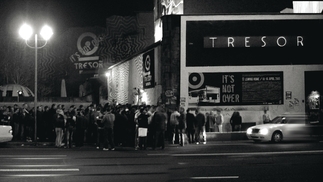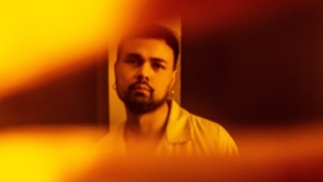At Home With Âme: DJ Mag hits Innervisions HQ to meet the enigmatic German duo
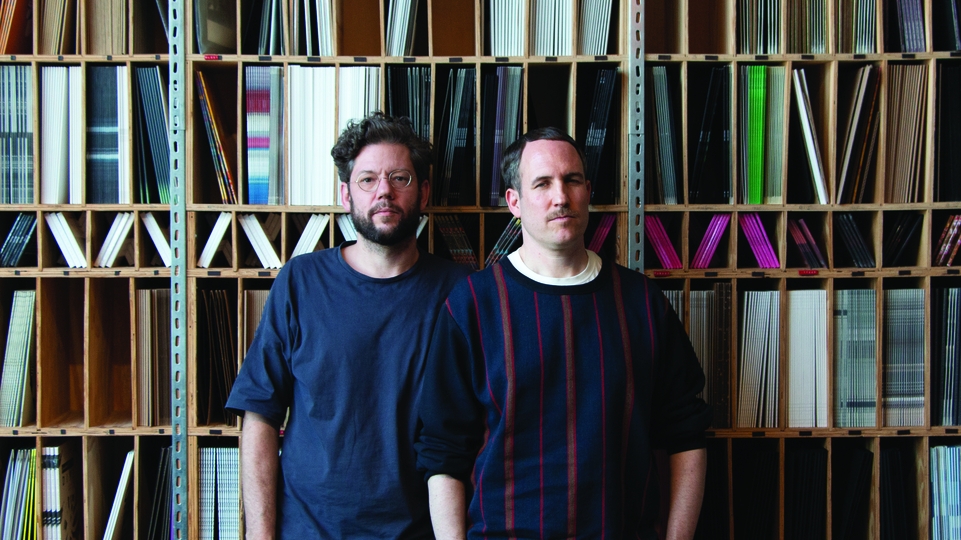
From their Berlin creative hub, production duo Âme — who made the evergreen house classic ‘Rej’ — talk about their record shop, distribution arm and studio complex, how they go about creating, and their long awaited new album ‘Dream House’...
Kristian Beyer and Frank Wiedemann, better known as Âme (that's pronounced 'arm', for the record, not 'ahh-may') often refer to their relationship as being like that of "an old couple". More accurately prehaps, they're like an old couple in an open marriage. While that's an unsavoury image, the description does bear scrutiny. They affectionately bicker with each other in the way that old, slightly adversarial friends, or spouses, do. They also see other people, with Frank being half of The Howling, with the LA-based Austrailian singer and musician RY X, and also half of Schwarzmann with Henrik Schwarz.
He describes the situation with admirable diplomacy: "We're very different. But we accept each other for those differences. It's like the phrase, 'I disapprove of what you say, but I will defend to the death your right to say it.' That's basically the basis of our relationship." Spending time with them, this sounds about right.
As with any married couple, they are most comfortable at home. In their case, it’s their HQ in Kreuzberg, the handsome-but- reassuringly-shabby district just to the south of central Berlin. It’s home to their record label Innervisions: founded in 2005 with the enigmatic Steffen Berkhahn, better known as Dixon, it has boasted releases by everyone from Laurent Garnier to Marc Houle. The offices, which they moved into six years ago, also contain their vinyl distribution company Muting The Noise, their DJ agency Temporary Secretary, and an occasional record shop, which opens for just a few hours every Thursday and acts as a kind of weekly social hub for producers and DJs across the city. It even has its own licensed bar. Also close by in the neighbourhood is their studio, a Mecca for vintage synths, the control centre built using eight tons of timber sourced from ancient woodland just outside the city.

ART HUB
On the day DJ Mag visits Innervisions headquarters, summer has arrived early in Berlin. As such Kristian, something of a sartorial maverick, has busted out his leather sandals, and a pair of unfeasibly baggy pants. His pencil moustache (which he’s had for years now, long before such facial accoutrements became the preserve of the hipster) is trimmed immaculately. The building where we sit, at a very tasteful suite of mid- century Danish furniture lifted from Dixon’s house, was initially chosen for pragmatic reasons, equidistant from where Kristian and Frank were living at the time. But it’s since become a home from home, a loft space with racks upon racks of records and homely rugs. Though it’s ultimately a workspace, albeit a relaxed one, the decision to start selling records from their office wasn’t such a leap. Kristian ran a record shop for 12 years in Karlsruhe, where he and Frank first met. “I love vinyl, but running a record store, you see the same stories every day, and nothing changes,” he says. “High Fidelity,” chips in Frank. They’d already begun running their vinyl distribution company through the of ce, so people would be popping in on a regular basis to pick up vinyl anyway. “We thought, we get this direct contact with people, and we get direct feedback, we have the space, why don’t we open once a week. We still do this, but in a healthy dose,” says Kristian. “It started as a part of this whole thing,” adds Frank. “The reputation was good, then we thought, ‘Oh, well it has to look nice’, then we thought, ‘Let’s have a bar, and a nice soundsystem’. It’s now a kind of open arts space. Labels use it for release parties, and so on. But we have a neighbour who has a little boy just next door, so if the kick-drums are too loud, we start getting the texts like, ‘Maybe now we could start to wind it down!’”
They launched their distribution business at a time when the industry was, to put it bluntly, properly on its arse, with a host of major distributors going out of business in the wake of the digital music revolution, and running countless independent labels into bankruptcy.
“Instead of whining and saying, ‘Oh, it used to be so much better’, we thought about it, and we decided maybe there’s another way,” says Kristian. As they were already pretty successfully selling their own records direct to fans through their website, they just carried on doing it, and brought in the labels of a select few friends too, like fellow Berlin imprints Lossless and Exit Strategy, and Leipzig’s Riotvan. Creating this physical hub around them has made the Innervisions crew pivotal to the Berlin scene for nearly a decade, during which the city has become arguably the most in uential in the world when it comes to electronic music. “In the ’80s, they were still destroying buildings, especially in Kreuzberg,” says Kristian of the neighbourhood. “Some were still damaged or destroyed from the war. Berlin was always a poor city, it had no industry.”
As such, the city authorities were happy for many of these huge, dilapidated buildings to be taken on by anyone who would have them, often for next to nothing. “They let people ‘do’,” says Frank. “The local government didn’t have time to take care of all the abandoned space, between the wall coming down and perhaps 2010, maybe. The people who started Ostgut and then Berghain were active people like this, and the authorities would be like, ‘Here’s the building, take care of it’.”
Adds Kristian: “They discovered early it’s better to support cultural life than build barriers. They even help, if they can. They don’t come and say, ‘We’re shutting down your club’, they say, ‘What problem do you have?’ So there’s a good connection between those who legislate and the producers of culture. That’s unique to Berlin, in the whole world.”

BERLIN BEGINNINGS
As a result, areas like Kreuzberg and Friedrichshain, on the other side of the River Spree, became havens for artists and musicians. The irrevocably skint, basically. Kristian and Frank arrived in 2009, relatively late on in terms of dance music’s wholesale migration to the city, in pursuit of its vibrant party scene and cheap rents. Frank recalls visiting friends in Berlin in the early ’90s, a ‘very different’ proposition to what it is now. “For 200 Deutsche Marks you could get a 400 square metre apartment, but, you know, it would have no toilet,” he says. Back then, Berlin had a local techno scene, they reckon, but not the same international renown that Frankfurt and Cologne had. It was the introduction of cheap ights from easyJet and Ryanair around 2000 that caused the influx of weekend clubbers that changed Berlin into what it is now. “Before that, The Love Parade was the only reason people would come to Berlin from Frankfurt,” says Kristian.
By the time they moved from Karlsruhe to Berlin, they’d already had a stack of tracks out as Âme, first on Jazzanova’s Sonar Kollektiv, which was also based in Berlin, and then on the fledgling Innervisions, which was first formulated around their now pivotal single ‘Rej’, the brooding, muscular chug-fest which thrust the pair into the limelight. The pair arrived in the city with differing circumstances, however. Kristian was expecting his first child, who was born two weeks after they moved in, while Frank had emerged from an 11-year relationship and was suddenly “a solo player”. They describe “a little tension” between them during this time, while Frank “jumped into the Berlin life”, as Kristian describes it.
“I liked it very much,” says Frank. “In Karlsruhe there was always something to do, or people to see, but because I had nothing ‘to do’, I’d get up and hang in the cafe, go back, make some music, maybe read a book, or go to Berghain, whatever. There was no plan.” They admit that the city changed their music a little too. “There was stuff happening here, things to learn, people to meet, projects starting out of nowhere. We didn’t have that in Karlsruhe. We reached a point where nothing was happening anymore. The city was giving us nothing back,” says Kristian.
Perhaps some of what Berlin has offered them since they arrived is found in ‘Dream House’, the pair’s new album, the first to be made in Berlin and only their second in all, coming some 14 years after their debut long-player from 2004. As far as they’re concerned, there have only been a handful of house music albums that they still rate. Matthew Herbert’s ‘Around The House’ is one. Motorbass’ ‘Pansoul’ is another, along with ‘Rest’ by Isolée and Moodymann’s ‘Silentintroduction’. “The list ends really abruptly,” says Kristian.
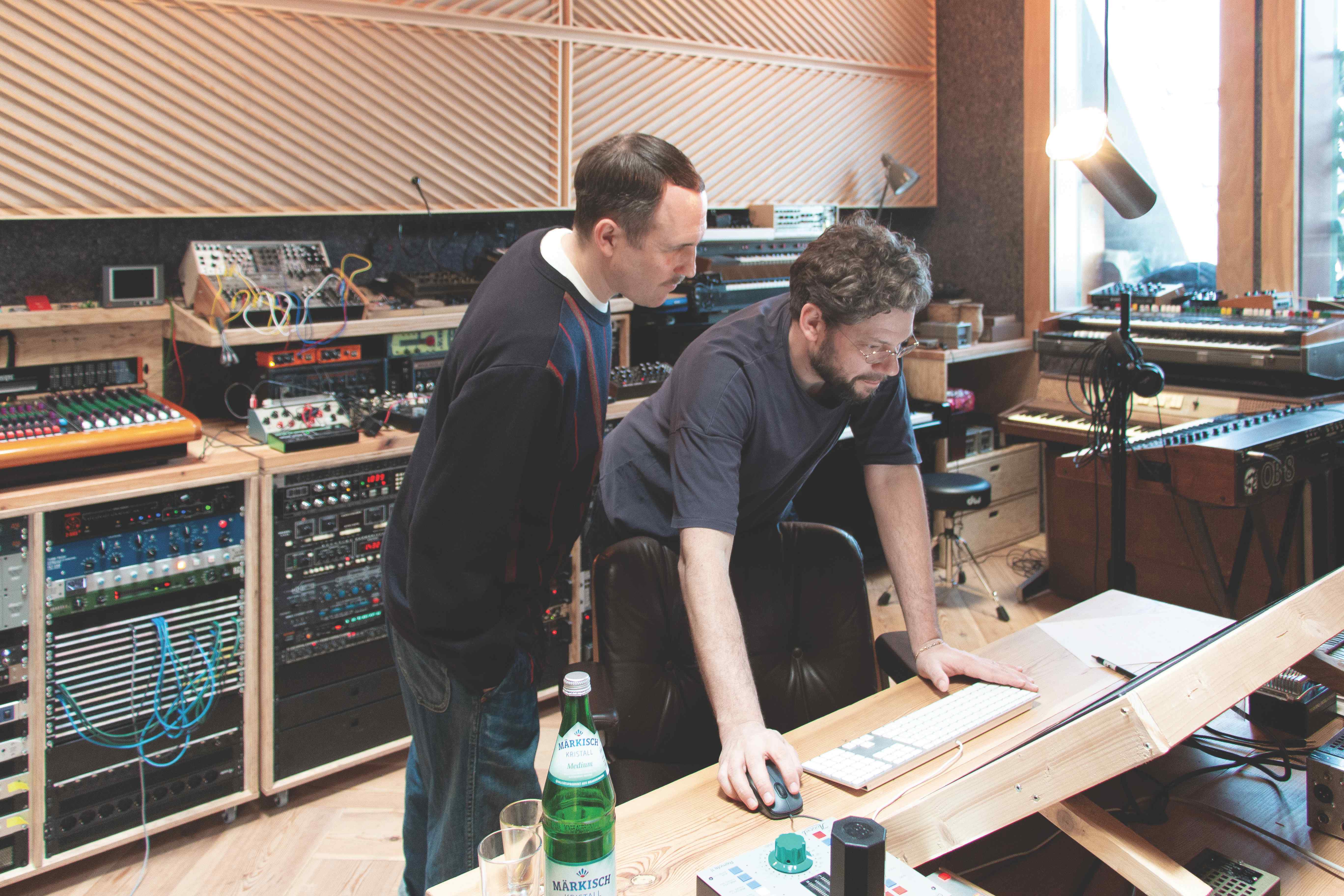
TRUST
So do they think that ‘Dream House’ could join such rarified ranks? “Well, we didn’t make a house record for that reason!” jokes Frank. Indeed, despite the name ‘Dream House’, it’s not a house record at all, really. “Why we didn’t do an album for a very long time is because there was not a basic idea for it,” says Kristian. “Behind every album, there’s a conceptual idea, and there just wasn’t one. But we felt that we hadn’t worked together for a long time, Frank had been concentrating on the Howling project. There was no pressure. So we’d collected some ‘skits’ and thought maybe it could go in this direction. We found the right atmosphere.”
For some time now, the pair have split the duties of Âme, with Frank handling the technicalities of the studio and the live performance, while Kristian handles the consistent demand for DJ sets, as well as bringing what you might describe as the ‘vibesmanship’ when they’re in the lab together. So what’s the process of a typical Âme production? “It’s me sleeping, and Frank working,” says Kristian, bursting into peals of laughter. “I’m the Rick Rubin, lying on the couch sleeping, then saying, ‘the kick-drum is not right’.”
“Yes, me working on one millisecond of a single sample over and over again,” adds Frank. This separation of roles works for them. And both are more than happy to affirm that they couldn’t do Âme without each other. Joking aside, they qualify that when they’re formulating Âme material, they do so together, though Kristian is happy to admit that it’s most certainly Frank who’s working the mixing desk and the software. While this system has worked on the latest album, it’s caused friction in the past, particularly in how they were communicating their ideas.
“It was part of the big discussion we had when we first moved here, the way we were talking to each other,” says Frank. “It was not OK. If you create something, it’s like a little plant that you’re growing. Then someone comes in with their sandals and kills it. But now I trust him more and more.”
As well as finding ‘the right atmosphere’, they also found some pretty special collaborators. The inimitable Matthew Herbert appears on the album opener, ‘The Line’, providing unusually soaring vocals. There are echoes of The Beta Band.
“Matthew Herbert was my first access to house music,” says Frank. “My kind of house music.” Veteran Berlin scenester and musician Gudrun Gut pitches up on the angular, abrasive workout ‘Gerne’ and DFA alum Planningtorock drops in an unexpected auto-tune performance on the melodic, almost-pop of ‘Blind Eye’. Meanwhile, the joyous ‘No War’ features a lush Weather Report sample, and is dedicated to Frank’s mother Elke, who used to run a famous jazz club in his hometown, and knew the band’s revered frontman Joe Zawinul. It’s a most fitting tribute.
They also hooked up with the legendary Hans-Joachim Roedelius of the seminal krautrock outfits Cluster and Harmonia (the latter his supergroup with Michael Rother from Neu! and Brian Eno) for ‘Deadlocked’.
“Peter Kruder, a friend of mine, knew him, and said he was a super lovely dude. I mean, what do you expect from an 83-year-old guy coming to your studio, and he’s one of your musical heroes? I didn’t quite know what to expect. He could be a diva or dropping names all the time, but there was none of that. He came in and there was not one moment that was not great. It was heart-warming. He’s just a really lovely guy who feels the need to make music every day.”
‘Dream House’ is a gleamingly produced, accomplished and cohesive album, and pleasingly, features little of what you might expect from an Âme ‘club’ production. It’s only ‘Queen Of Toys’, a churning, throbbing, guttural workout, that has the whiff of the nachtclub about it.
As Kristian is most comfortable in the DJ booth, Frank is in his element in the pair’s stunning studio. Over at the immaculate facility, only recently completed, he’ll pull at a drawer, and out slides a vintage Korg Polysix or a Moog or a Linn Drum, plugged and ready to play. He pulls out strange and unusual boxes with baffling knobs and dials with the enthusiasm of a kid on Christmas morning. But like the scene at the end of Indiana Jones And The Last Crusade, it’s the least assuming keyboard in the room which has had the biggest bearing on Âme’s sound, a tatty, distinctly unfashionable Yamaha combi-organ that can be picked up for dozens of Euros, rather than thousands. He got a similar one for free from his dentist.
“I don’t want to get too much into the technology,” says Kristian, bluntly. “I would then have the same problems as Frank, maybe. Getting lost in the detail. You don’t see the big picture anymore.”
“I learn so much from him. Did you capture that moment?” replies Frank. Adds Kristian: “We can put it on a t-shirt.”

